Although humans have been using sculptures and paintings for thousands of years to uncover santiran of what he saw, but the idea to look at this new mechanical began in the 18th century, when scientists became interested by a device fashioned half-scientifically known as obskura camera. It is a small room, dark except for the light coming through the lens in a small hole in satudinding. The people in the room to see the sights of nature sunlit outside, which is projected on the wall opposite. But this santiran moment; when the light outside fades, santiran disappeared.
camera Obscura
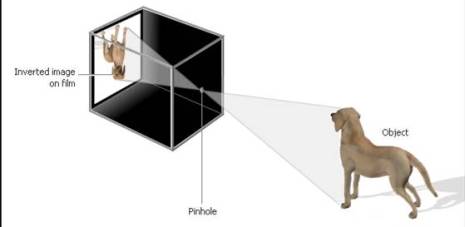
Efforts to capture and retain santiran-santiran is what produces photography. The first experiments were made with metal plates coated with various solutions of silver.These chemicals slowly break down when exposed to light. If the plate thus prepared was placed in a dark box (small form obskura camera) and mounted in front of a landscape or in front of an object, slowly dim shape of the object would appear on the plate. From the beginning are still raw is the arrival of a series of improvements in the photoreceptors, the chemicals and the camera; some of the important things is illustrated by the ancient historic photography shown on the following pages.
FIRST PHOTO
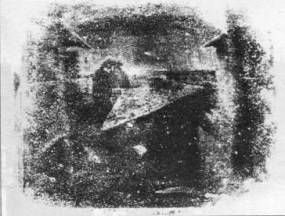 The world's first photograph made in 1826 by Joseph Nicéphore Niepce from a window at his farm house in France. For the "movie" Niepce using a mixture of tin plate dipekakan and he got an idea to escape from the roof tops that described above.These photos are usually fixed so obvious but this version as what it actually is.
The world's first photograph made in 1826 by Joseph Nicéphore Niepce from a window at his farm house in France. For the "movie" Niepce using a mixture of tin plate dipekakan and he got an idea to escape from the roof tops that described above.These photos are usually fixed so obvious but this version as what it actually is.
Below is the result of the shooting has been repaired. Image of a Set Table is made Niepce in 1827
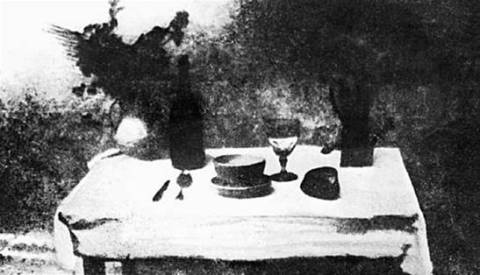
LONG TERM EXPOSURE
Silver plated copper plate with silver jodida record santiran a street in Paris. In artificial daguerreotipe LJM Daguerre in 1839, there are the first person ever photographed - someone who was told that his shoes cleaned (front right). The road was busy but this person just long enough in place, so look for lighting by five minutes.
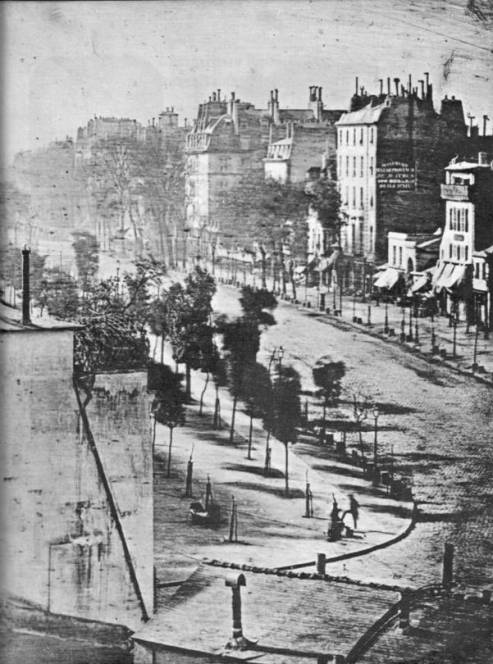
Important Experiments on Copper
The first successful attempt at capturing santiran vision was performed in France in 1830 by Nicéphore Niepce, an inventor, and Louis JM Daguerre, a stage designer.Actually Niepcelah people who feel honored to make the first photograph in the world.But Daguerre was the person who started photography by imposing mercury vapor on a copper plate sensitive to bring up santiran much sharper than ever can be made in advance people. Although no copies can be made from a picture of it, daguerreotipe is highly profitable and made wealthy inventor.
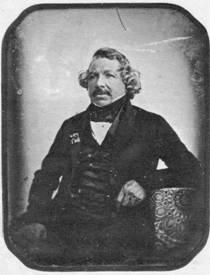 Daguerre IN DAGUERREOTIPE
Daguerre IN DAGUERREOTIPE
First Film of Paper
At the same time an Englishman, Fox Talbot, was making "movies" findings in the form of silver chloride coated paper. The result is a negative paper that can reproduce much mold with pressed on sensitized paper and let it penetrated by sunlight.
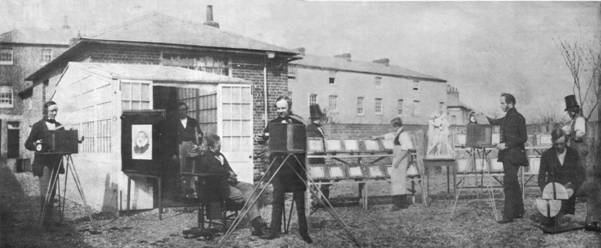
In a photograph made in 1845 is Fox Talbot in advance laboratory studio showcase the efficacy of this discovery can process paper (from left) Talbot middle photograph (reproduction) painting, photographing people sitting amid Talbot, Talbot is printing using the "movie paper" was on shelf in the sunlight and Talbot when memmotret sculpture.
Better Results with Glass Wet
Daguerreotipe and paper negatives Talbot forgotten by the year 1860 after the introduction of the film from the glass plate is chemically treated. Glass is an excellent base for sensitive chemical emulsion because completely transparent and does not impede the passage of light, allowing the bright and sharp prints. Problems attach emulsion onto the glass broken by an Englishman, Scott Archer, 1851. He used a sticky liquid called kolodium. Wet plates had to be prepared, exposed and washed in place, before the emulsion dries sensitivity. This process is a hassle, but it is good enough so that the photographer is eager to carry heavy equipment around the world.Two pioneers such is William H. Jackson, who photographed the American West Region, and an Englishman, Roger Fenton, the ancient war photographer.
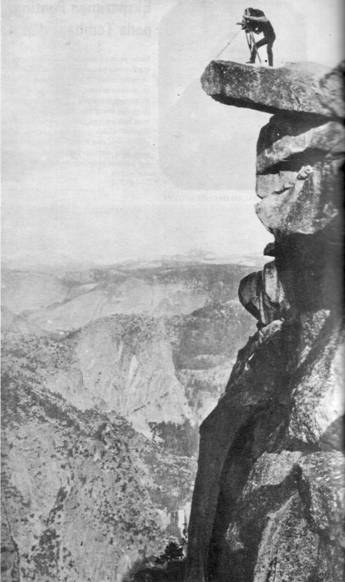 JACKSON IN ACTION
JACKSON IN ACTION
At the top of Glacier Point, in what is now Yosemite National Park, California, Jackson set the wet plate camera for photographing landscapes. Between 1866 and 1879 he was wandering in the Western District of America, and create thousands of photos. His photographs are very popular and influential landscape shots to persuade the US Congress to create national parks across America
WORKSHOP EASY TO BRING
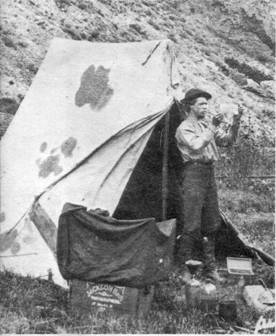
In the Western District American, William H. Jackson working with wet plates in a dark room, a tent near the railroad tracks in Utah. He photographed train crew in exchange for a free ride.
TOOLS FOR WET PLATE
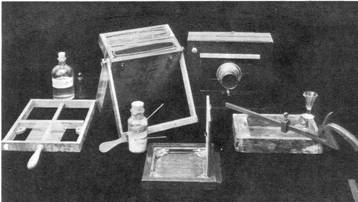
The tools is needed to create an image on a wet plate. Glass plates clamped (left) to be cleaned and digilapkan. Kolodium sticky poured on the glass, which is then dipped in a bath plate (tengoh), the plate gets a layer of silver nitrate solution. The plate is placed in a container (depon) that can be inserted in the camera (belohang, right) without touching the surface Iengketnya on sesuatu.Sesudah lighting, a pistol butt (right) used to soak the plate in the washing liquid. The weight of all this equipment can mcncapai 50 kilograms.
Photographer WAR CREAM
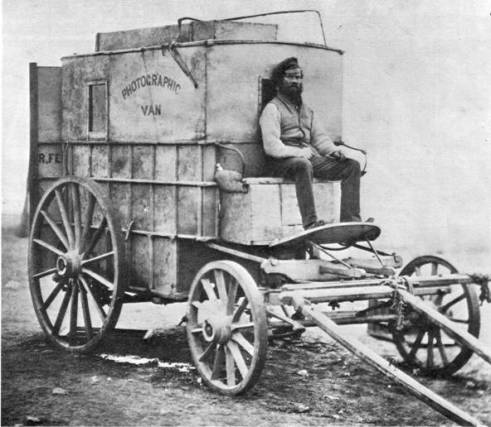
Roger Fenton was a British lawyer who with his assistants carry a photo-lab-this traveling to the Crimea in 1855. In the carriage, Fenton store five cameras, 700 glass plates, and boxes of chemicals, as well as sleeping tents, and food. He explored the campsite and battlefields. He often stopped by British troops who insisted that they were photographed.
Dry Plates miracle
Experiments were struggling fiercely with the wet plate portraits ended in 1876 with the arrival of the dry plate - square glass as before, but this time the sensitivity emulsion layer gelatin detained by fast drying. Formula gelatin dikernbangkan first in 1871 by an English physician, Richard L. Maddox. Unless plates can be prepared beforehand, gelatin itself increase the sensitivity to 60 times faster than the first wet plate. Now, for the first time, the action can be "terminated" with a fast exposure time.The new plate was immediately rnenimbulkan dalarn change camera model. Until that time, photographs are made by removing the lens cap on the camera, because the lighting is measured ticking or bermenit; and "movie" is very slow so as not to catch sight of the photographer the finger. Now, with the faster plate, cover mechanically complex required to enter a glimpse of light through the lens. Photos of dramatic new action soon follow. Eadweard Muybridge made a vital study of locomotion, reducing the exposure to a fraction of a second. The pictures he made the first time lets people see how they actually move.
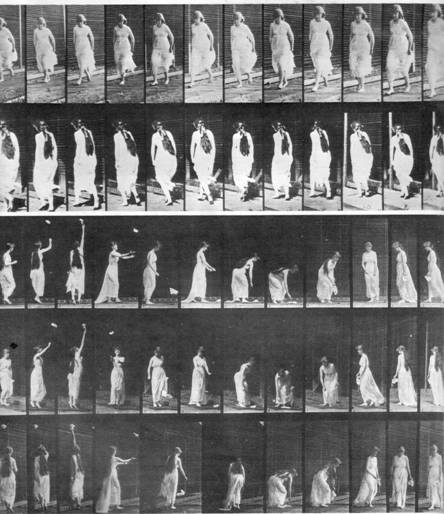
ACTION PHOTOS berangkai
Muybridge made a study of motion in several ways. In the two series above it synchronizing front and rear view of the girl walking. In three series under he uses three cameras to various views of a girl who threw a handkerchief. This motion study invaluable means for artists and doctors who teach disabled people walk. Muybridge first worked with wet plate. Only after wearing dry plates faster, he developed the technique of stop-motion that made him famous - and notorious, because a lot of the circuit in the form of the nude
A row LENS
A camera lens 12 was designed by Muybridge to make successive images as complicated as on the opposite page. Pickers snapped in succession, each disputing a split second. What appear to be the lens 13 (left) is actually a lens that controls pemumpun pumpun all other lenses.

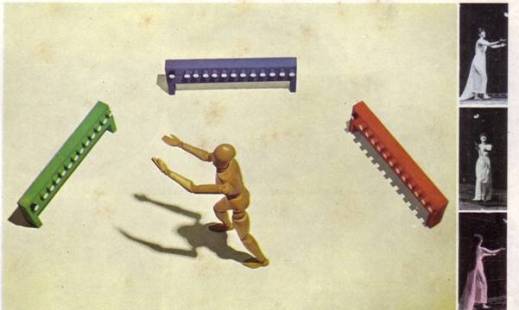
METHOD THREE-CAMERA Muybridge
To shoot the girl who threw the handkerchief on the image side, three lens camera aiming Muybridge 12 -one from the side, one of the front corner and one from the back corner. Pickers are synchronized so that the lens-lens work in unison. These three images above each is an image taken by a fourth lens on each camera. Saw the round view of the movement of the girl.
Photography for Everyone
The invention of roll film and the camera box object carried in the hand that is easy to use open fields for amateur photography. A man named George Eastman is a core force in the renewal of this flagrant. As an entrepreneur dry plates in Rochester, New York, Eastman began to question why breakable glass plates and the weight can not be replaced with something better. Is not just a glass pedestal emulsion? Why not use a flexible material, something that can be rolled up on a piston and a camera placed in such a way that one can order each time was exposed? In 1889, Henry M. Reichenbach, an Eastman employee had perfected such emulsions pedestal, made of a mixture of nitrocellulose and wood alcohol. The discovery turned out to be so successful that it is used all over the world until the 1930s - when a material which is not so flammable, cellulose acetate, replace it. Meanwhile, Eastman enhance the film reels and cameras that contain it - Kodak. Everything is contained in this first Kodak unique, including its name, composed by Eastman. Kodak is a superior simplicity shortening the photographic process into two easy steps: see objects through reconnaissance and massaging pickers. The camera is small and light; berpumpun lens can capture everything clearly within three meters. Film installed at the factory and after 100 times the camera scene were sent to the Eastman Company, where the film was washed, printed and returned with a camera that has been filled again. Kodak was appalling - millions and millions sold worldwide: Eastman motto "You push the button, then submit it to us," became an international byword, so even appeared in Gilbert and Sullivan operetta, Utopia, Unlimited, in 1893.
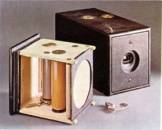
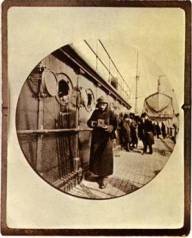
KODAK FIRST
Kodak original inner mechanism released above this ideal for roll film newly discovered. This film can be used for 100 photos; The new order can be placed into position by hand after each round lighting. Cover photo round eliminates edge tends to become blurred. On the right side, George Eastman, on the boat, pointing the new discovery while a friend took a picture with other Kodak.
Kodak perpetuate nearly every view, as seen in the photographs from the 1890's.Travelers equip itself with Kodak and snapped whatever the natives while photographing tourists. Everywhere people capture on film what they see his eyes.
The start of Color Photography
It is surprising that some of the works have been created colored since a century ago.At that time James Clerk Maxwell of Scotland demonstrated that color photos can be created by breaking an object into the three primary colors - red, green and blue - with filters. What a pity that the system requires three separate photos, each of which reveals a color. New in 1904 one finds a color system that is reliable, and only using one camera. This is achieved in France by the Lumiere brothers to the process that they call autokrom. The secret is in the "movies" they are in the form of a glass plate coated with microscopic starch grains, each of which is colored red, green or blue. The idea of inserting particles divergent color into the film itself is still being followed until today.
COLOUR AT THE BEGINNING OF THE BEGINNING
Photo above ceramic tiles made by cousin Nicéphore Niepce in 1867. "Movies" it is a silver plate which can be colored dipekakan particular under the influence of sunlight.
AUTHOR: Teddy K Wirakusumah













